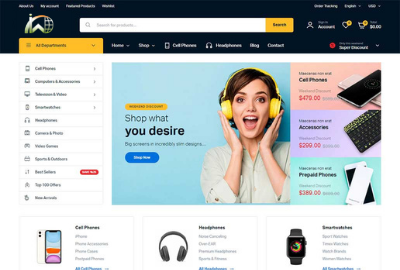In today’s digital age, social media marketing has become an indispensable tool for businesses aiming to expand their reach and engage with their target audience effectively. However, setting and achieving social media marketing goals is not always straightforward. It’s crucial to understand that these goals must be flexible due to the dynamic nature of the digital landscape. In this article, we’ll explore why social media marketing goals should be flexible and how this adaptability can benefit your business.
Understanding the Ever-Changing Social Media Landscape (H1)
The digital world is in a constant state of flux. New social media platforms emerge, algorithms change, and user behavior evolves. To stay relevant and competitive, businesses must be willing to adapt their social media marketing strategies.
The Influence of Emerging Platforms (H2)
New social media platforms are introduced regularly. For example, TikTok exploded onto the scene, becoming one of the most popular platforms in a short period. Businesses that initially overlooked TikTok had to adjust their strategies to tap into this new audience.
Algorithmic Changes (H2)
Major social media platforms frequently update their algorithms. These changes can significantly impact your reach and engagement. Being flexible allows you to pivot your strategy in response to algorithmic shifts.
Catering to Shifting Audience Preferences (H1)
Audience preferences are not static; they change over time. Your social media marketing goals should be flexible enough to accommodate these shifts.
Evolving Content Formats (H2)
Video content, for instance, has gained immense popularity over the years. Being flexible means being open to experimenting with various content formats that resonate with your audience.
Real-Time Engagement (H2)
In today’s fast-paced digital world, real-time engagement is vital. Your flexibility should allow you to respond promptly to trends and conversations relevant to your industry.
Adapting to Competitive Pressures (H1)
The business landscape is highly competitive, and your competitors are likely to make strategic moves that affect your social media presence.
Monitoring Competitor Strategies (H2)
By staying flexible, you can keep a close eye on your competitors’ social media strategies and adjust your own to maintain a competitive edge.
Swift Response to Market Changes (H2)
Market conditions can change rapidly. Flexibility in your social media marketing goals enables you to respond swiftly to market shifts, ensuring your brand remains resilient.
Embracing Data-Driven Decision-Making (H1)
Flexibility in social media marketing goals allows you to gather and analyze data continuously, leading to more informed decisions.
A/B Testing and Optimization (H2)
A flexible approach allows you to conduct A/B tests to determine what works best for your audience. You can then optimize your strategies accordingly.
Measuring ROI and Adjusting (H2)
By regularly assessing the return on investment (ROI) of your social media efforts, you can adapt your goals and allocate resources more effectively.
Conclusion
In the world of social media marketing, flexibility is the key to success. Your goals should not be set in stone but should evolve with the ever-changing digital landscape. Embrace new platforms, adapt to algorithmic changes, cater to shifting audience preferences, respond to competitive pressures, and make data-driven decisions. By doing so, you’ll ensure that your social media marketing efforts remain effective and yield positive results.




